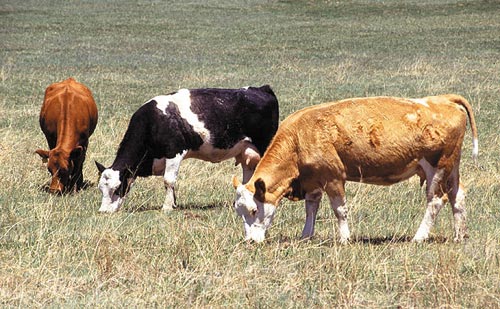January 28, 2011

While many in the U.S. cattle industry are looking at current high beef cattle prices and wondering if and when the bubble will burst, market factors seem to indicate that a sudden and sharp fall is not likely to be forthcoming.
“The recent pullback in prices is not unexpected, but beef prices will more than likely push beyond the $108 of a few weeks ago as the cattle market’s traditional springtime strength factors in,” said Derrell Peel, Oklahoma State University Cooperative Extension livestock marketing specialist.
Peel believes that 2011 will be the year when the U.S. cattle industry discovers just how much demand for beef products exists amongst consumers.
“Beef demand in the retail marketplace is going to be the major limiting factor as to how high cattle prices can go,” he said. “It’s going to be what consumers can and are willing to absorb in terms of higher prices for meat. What is going to happen in 2011, more so than the past couple of years, is that the beef industry will be passing the impacts of what we’ve been building toward on to the consumer.”
The underlying supply situation that is the major driving factor of current beef prices has been developing since the early 2000s, when drought conditions across a significant portion of the United States extended the last major cyclical herd liquidation.
“Bovine Spongiform Encephalopathy shocks in 2003 pushed the industry to new levels of intensity with tight feeder supplies offset by placing ever younger and lighter cattle into feedlots,” Peel said. “This reaction worked well as long as corn was cheap.”
By 2004, prices had reached a level that resulted in limited herd expansion in 2004 and 2005. In 2006, the world marketplace changed with grain prices jumping to new levels, which have continued fundamentally higher and provoked long-term beef industry adjustments that continue to this day.
Peel said the loss of profitability caused by high and volatile input prices since late 2006 also prompted additional liquidation, which has contributed to today’s extremely tight cattle inventory numbers.
“The point is that there are some very solid reasons why we are seeing high cattle prices,” he said. “Limited cattle numbers, high grain prices that temper carcass weights and the need to reduce heifer and cow slaughter all suggest that supplies will tighten significantly in 2011 compared to recent years.”
Wait a minute, some contend; when it comes to beef prices, what about the limiting factor of competing meats such as poultry and swine?
“Competing meats always play some sort of role, but the current situation seems to indicate that poultry and swine will be less important in terms of driving beef prices than they have been in the past,” Peel said.
Pork looks to be pretty similar to last year in terms of market share, though retail prices will tend to be higher than that of past years for consumers, as with many goods and services because of the far-reaching effects of the recession.
“Poultry numbers are expected to be up but not as much as 2010, in no small part because of the effect high grain prices are having on production,” Peel said. “Within the beef industry, the internal forces are exerting a greater influence than are competing meats.”
In short, the U.S. beef industry will continue to be in flux throughout the spring and beyond.
“It’s going to be a constant process to see how everything plays out,” Peel said. “We’re always telling beef producers to keep an eye on market trends and price structures as they can have a significant effect on the potential profitability of production and business decisions. That is going to be especially true this year.”
You May Also Like




